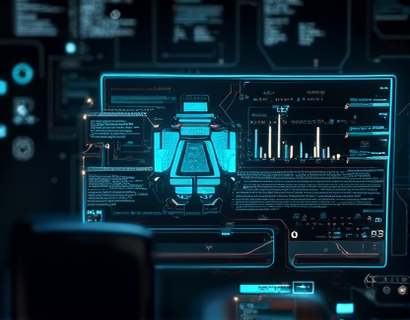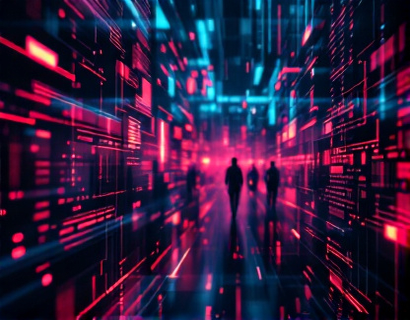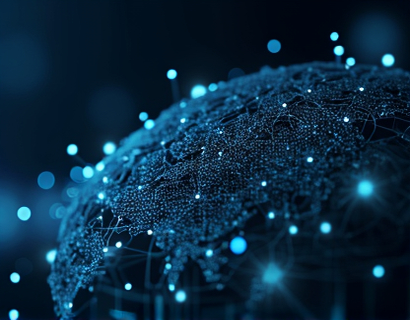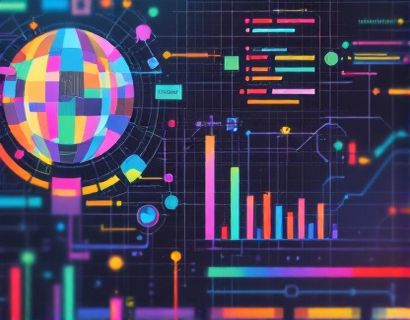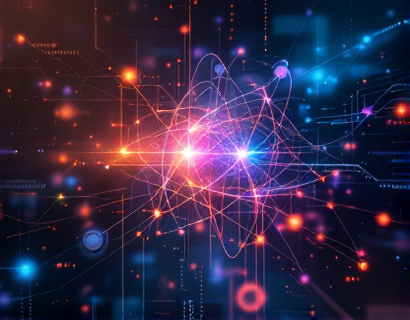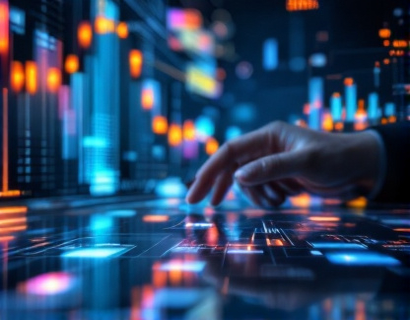Revolutionizing Digital Productivity: The Synergy of AI and Cryptocurrency
The intersection of artificial intelligence (AI) and cryptocurrency is ushering in a new era of digital productivity, transforming the way we work, interact, and manage our digital lives. This fusion of technologies is not just a novel concept but a practical solution that enhances efficiency, security, and accessibility. For tech enthusiasts and early adopters, understanding how AI and cryptocurrency are redefining workflows is crucial. This article explores the transformative impact of these next-gen innovations and how they are maximizing digital productivity.
Enhancing Workflow Efficiency with AI
Artificial intelligence has been a game-changer in various industries, and its application in digital productivity tools is no exception. AI-driven applications can automate repetitive tasks, analyze vast amounts of data, and provide insights that would be impossible for humans to discern manually. In the context of digital productivity, AI can optimize workflows by identifying bottlenecks, suggesting improvements, and even performing tasks autonomously.
For instance, AI-powered project management tools can predict project timelines, allocate resources more effectively, and alert team members about potential delays. These tools use machine learning algorithms to learn from past projects and continuously improve their predictions and recommendations. This not only saves time but also reduces the likelihood of human error, ensuring that projects stay on track and within budget.
Cryptocurrency: A Secure and Decentralized Solution
Cryptocurrency, on the other hand, offers a secure and decentralized alternative to traditional financial systems. By leveraging blockchain technology, cryptocurrencies ensure transparency, immutability, and security in transactions. This is particularly beneficial for digital productivity tools that require secure and reliable payment methods. The decentralized nature of cryptocurrencies means that there are no intermediaries, reducing transaction costs and speeding up processes.
Moreover, the use of cryptocurrencies in digital productivity tools can enhance user privacy. Transactions are recorded on a public ledger, but the identities of the parties involved are pseudonymous, providing a level of anonymity that traditional payment systems cannot match. This is especially important for users who value their privacy and security online.
Integration of AI and Cryptocurrency
The true power of AI and cryptocurrency is realized when they are integrated seamlessly. This synergy creates a robust ecosystem where AI can leverage the security and efficiency of blockchain, while cryptocurrency can benefit from AI's ability to optimize and automate processes. For digital productivity, this integration leads to the development of innovative applications that are both secure and efficient.
One prominent example is the use of smart contracts in conjunction with AI. Smart contracts are self-executing contracts with the terms of the agreement directly written into code. When combined with AI, these contracts can adapt to changing conditions and execute tasks based on real-time data analysis. For instance, an AI-driven system can monitor project milestones and automatically trigger payments to stakeholders once certain conditions are met, ensuring timely and accurate transactions.
Enhancing Security Through AI and Cryptography
Security is a paramount concern in the digital world, and the combination of AI and cryptography offers a robust solution. AI can detect and respond to security threats in real-time, while cryptography ensures that data remains confidential and intact. For digital productivity tools, this means that sensitive information, such as user data and financial transactions, is protected from cyber threats.
AI-powered security systems can analyze patterns and identify anomalies that may indicate a security breach. These systems can automatically implement countermeasures, such as isolating affected areas of the network or alerting administrators. When paired with cryptographic techniques, such as encryption and hash functions, the security of digital productivity tools is significantly enhanced.
Improving Accessibility and User Experience
The integration of AI and cryptocurrency also improves accessibility and user experience. AI-driven interfaces can adapt to individual user preferences and behaviors, providing a more personalized and intuitive experience. For example, AI can suggest custom dashboards, automate routine tasks, and even predict user needs before they are explicitly stated.
Cryptocurrency, through its use in microtransactions and seamless payment processes, ensures that users can access premium features and services without the hassle of traditional payment methods. This is particularly beneficial for a global user base, as it eliminates the need for currency conversion and reduces transaction fees.
Case Studies: Real-World Applications
To better understand the practical applications of AI and cryptocurrency in digital productivity, let's look at a few real-world examples. One notable platform is a decentralized cloud storage service that uses blockchain to ensure data integrity and AI to optimize storage and retrieval processes. Users can store their files securely, with the system automatically distributing data across multiple nodes to prevent loss. AI algorithms optimize the storage layout, ensuring fast access and efficient use of resources.
Another example is an AI-powered virtual assistant for businesses, which integrates cryptocurrency for seamless transactions. This assistant can manage schedules, send reminders, and even handle payments for services rendered. The AI learns from user interactions to provide more accurate and relevant assistance, while the cryptocurrency component ensures that all financial transactions are secure and transparent.
Challenges and Considerations
While the potential of AI and cryptocurrency in digital productivity is vast, there are challenges and considerations that must be addressed. One of the primary concerns is the regulatory landscape. Cryptocurrencies are still a relatively new and unregulated form of currency in many regions, which can pose legal risks for businesses and users. AI, while powerful, also raises ethical concerns, particularly around data privacy and the potential for bias in algorithms.
Another challenge is the technical complexity involved in integrating these technologies. Developers need to have a solid understanding of both AI and blockchain to create effective and secure applications. Additionally, user education is crucial, as not all users are familiar with these technologies. Providing intuitive interfaces and comprehensive support can help bridge this gap.
Future Prospects
The future of AI and cryptocurrency in digital productivity is promising. As technology continues to advance, we can expect more sophisticated and user-friendly applications. The development of more powerful AI models, combined with the growing adoption of blockchain, will lead to innovations that further enhance productivity and security. The rise of decentralized applications (dApps) and the Internet of Things (IoT) will also play a significant role in this evolution.
In conclusion, the fusion of AI and cryptocurrency is revolutionizing digital productivity, offering secure, efficient, and personalized solutions. For tech enthusiasts and early adopters, embracing these technologies can provide a competitive edge and a glimpse into the future of digital workflows.







